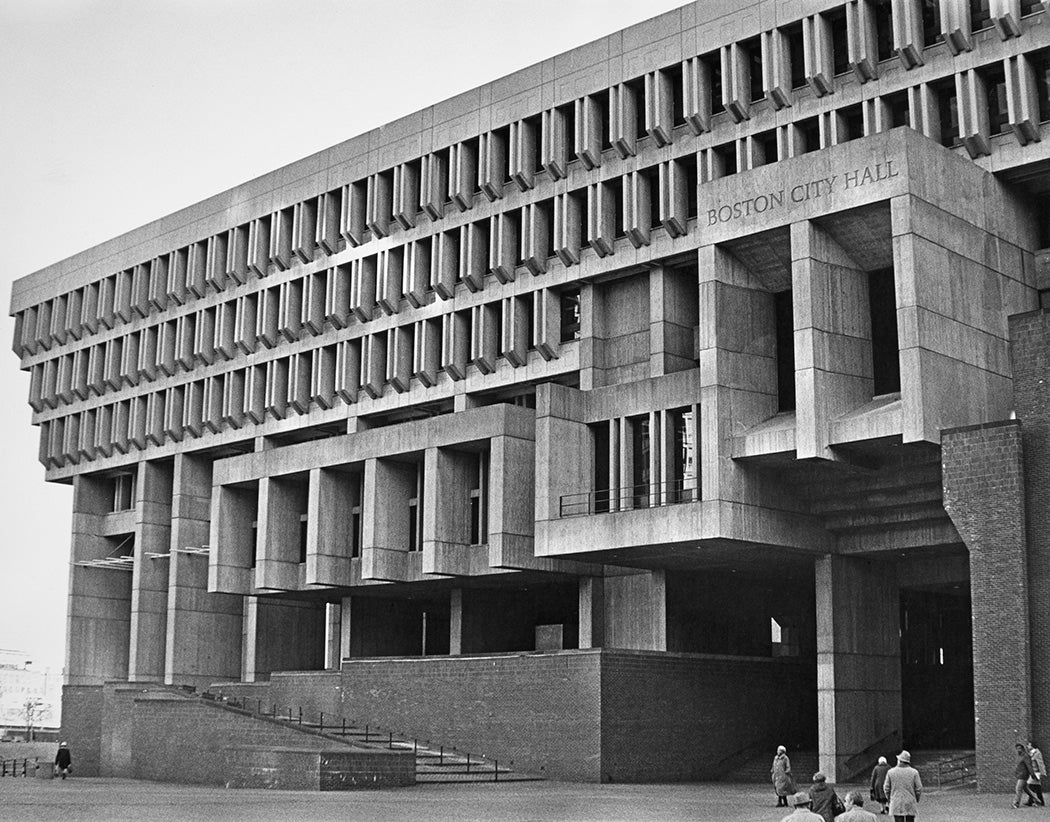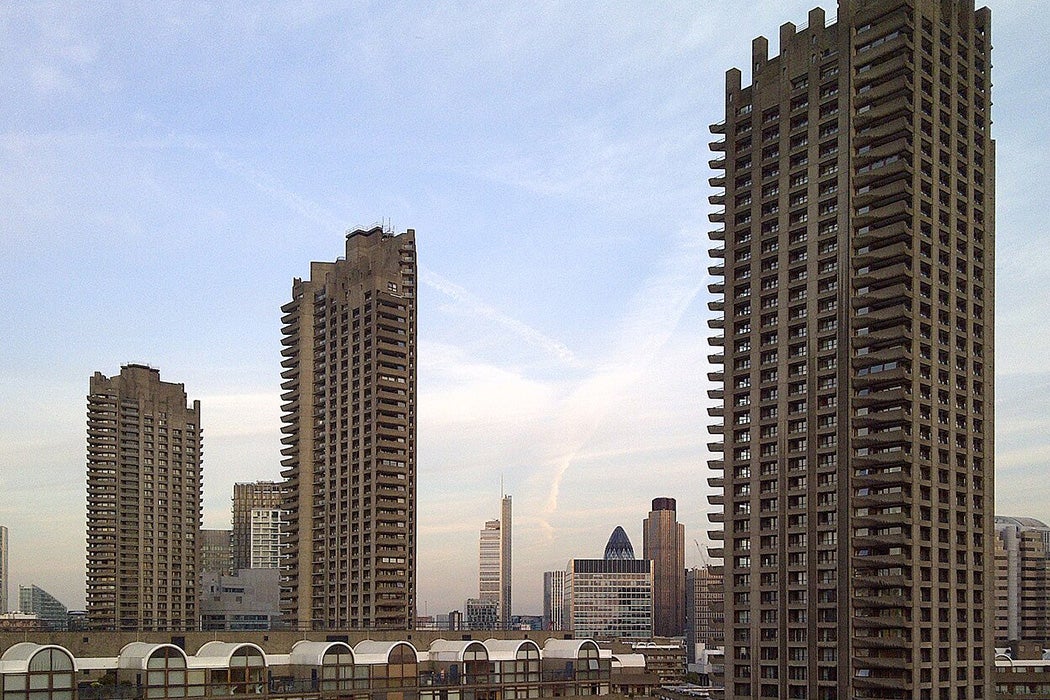Brutalist architecture. You either love it or hate it, right? However you feel, we can all agree that Brutalism is an architectural style that continues to elicit strong reactions some seventy years into its existence.
At times, it seems like everyone hates it. Take, for instance, Ian Fleming, who named one of the James Bond villains Goldfinger after Ernő Goldfinger, the architect best known for London’s Brutalist Trellick Tower. Or how about the incredible difficulties faced by preservationists when it comes to saving important Brutalist structures? Neither Paul Rudolph’s Orange County Government Center nor Alison and Peter Smithson’s Robin Hood Gardens, both Brutalist icons, were preserved successfully. On the other hand, Brutalism has entered our everyday lexicon. From books to fashion to household decor, you can buy a Brutalist version for yourself. It seems that the influence of Brutalism is here to stay.

Even to begin our discussion of Brutalism, we must accept that the origins of the term are under some debate. The architectural style was originally referred to as “New Brutalism,” a name generally credited to the British architect Alison Smithson. She used it to describe her and Peter Smithson’s design for Hunstanton School in the September 1953 edition of Architectural Design. However, the English architectural critic Reyner Banham wasn’t quick to give her credit. The Swedish architect Hans Asplund used the term nybrutalism (“new brutalism”) back in 1950. And then, of course, there’s Le Corbusier and his béton brut designs including the Unité d’habitation in Marseilles, France.
The visual aspects of Brutalism quickly evolved into a consistent style—massive, elaborate concrete structures that embraced their size, verticality, and building material. As Barbara A. Campagna explains,
The use of concrete and steel allowed the biggest buildings and complexes ever envisioned to be built. Concrete proved to be the easiest solution to the structural, constructional, and economic requirements of these complexes; it was flexible yet solid, malleable yet permanent.
What emerged was a powerful—and honest—style of architecture. Brutalism didn’t try to hide or cover the concrete used to construct its buildings. And those buildings, those enormous concrete structures, reveled in their intricacy. Perhaps their most impressive feature was their spatial and geometric complexities. To walk through the interior of a Brutalist building even today is to have a memorable spatial experience, to say the least.
Emerging in Britain as Europe recovered from World War II, Brutalism wasn’t merely a new aesthetic with which architects were experimenting. Alison and Peter Smithson begin their short contribution to a 1957 edition of Architectural Design dedicated to New Brutalism by pointing out that “if Academicism can be defined as yesterday’s answers to today’s problems, then obviously the objectives and aesthetic techniques of a real architecture (or a real art) must be in constant change.” As the post-war rebuilding began, the structures proposed were rebuilding a new world—one changed by unthinkable death and destruction.

Architectural historian Elain Harwood describes the conditions of the time, which can only be summarized as dire. As she notes,
The greatest need was for housing, for some 200,000 homes in England had been destroyed by bombing, while some two-thirds of working class housing was dependent on outdoor lavatories. Moreover, one-quarter of the civilian population had been displaced by the war, and the country was in the middle of its greatest ever baby boom.
Should architecture look to the past to solve its contemporary problems? Or should it remain in the moment and find a solution in the present? This is the point made by Smithsons. This second wave of modernist architects rejected the streamlined machine aesthetic that had come before in favor of something newer and bolder that suited their reality.
Weekly Newsletter
Large housing complexes, such as Goldfinger’s Trellick Tower or the Barbican Estate by Chamberlin, Powell and Bon, exemplify the purpose of Brutalism—massive housing developments built of soaring concrete structures. They’re powerful icons of the rebuilding efforts needed after the war to improve living conditions and to return to normal life. As the style jumped across the Atlantic, Brutalism branched out to other types of buildings. In the United States, Paul Rudolph’s design for the Art and Architecture Building on the Yale campus was positively received when it was completed in 1964.
Even with its successes, Brutalism began to fall out of fashion in the 1970s. The outsize concrete structures no longer appeared as uplifting icons of post-war development. Instead, they were seen as overpowering, cold buildings that were more often than not associated with the ills of society. So, what about now? Brutalism appears to be the style everyone loves to debate, but even with that, it remains a twentieth-century style that’s still relevant and influential in the twenty-first century.
Tips for Teaching Brutalism:
Discuss recent (re)assessments of Brutalism, including Barnabas Calder’s Raw Concrete: The Beauty of Brutalism and John Grinford’s How to Love Brutalism.
Take a field trip. Start with crowd-sourced lists of Brutalist structures in the United States and around the world.
Support JSTOR Daily! Join our membership program on Patreon today.







